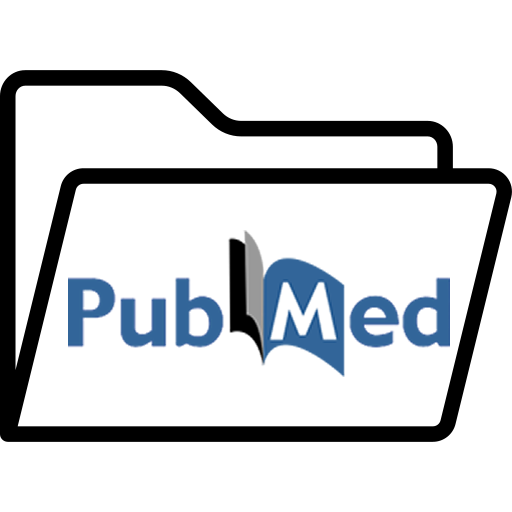Sivas Cumhuriyet Üniversitesi Kurumsal Akademik Arşivi
DSpace@Cumhuriyet, Sivas Cumhuriyet Üniversitesi tarafından doğrudan ve dolaylı olarak yayınlanan; kitap, makale, tez, bildiri, rapor, araştırma verisi gibi tüm akademik kaynakları uluslararası standartlarda dijital ortamda depolar, Üniversitenin akademik performansını izlemeye aracılık eder, kaynakları uzun süreli saklar ve telif haklarına uygun olarak Açık Erişime sunar.

Güncel Gönderiler
Genel Matematik
(Sivas Cumhuriyet Üniversitesi, 1999)
İktisadi ve İdari Bilimler Fakültesi ve Meslek Yüksek Okullarında birkaç yıldan beri, daha önce de Mühendislik Fakültelerinde okuttuğum, Genel Matematik derslerinde öğrencilerimin dersi yazarken dinleyemediklerini, derste bütün çabalarını not tutmak için harcadıklarını ve hem dinleyip hem de yazdıklarında anlayamadıklarına dair şikayetlerini duydum. Oysa öğrencilerin matematik dersinin büyük bir kısmını derste anlamaları gerekir. Derste hocanın anlattığı bir konuyu anlayamayan bir öğrencinin daha sonra tek başına çalışarak anlaması oldukça zordur. Matematik dersiyle ilgili piyasada mevcut kitapların bir kısmı, teori ve matematiksel ispatları fazla olan bilhassa Matematik Bölümü öğrencilerine yönelik hazırlanmış, bir kısmı ise belli konulara ağırlık verilip bazı konulara hiç - değinilmeyen kitaplardır. Bu nedenlerle, öğrencilerimin ve bazı meslektaşlarımın da teşvikleriyle elimdeki ders notlarımı bir kitap haline getirmeye karar verdim. Böylece öğrenciler not tutmadan konuları kitaptan takip ederek dersi dinleme imkanına kavuşmuş olacaklardır.
Tıp Fakülteleri İçin Davranış Bilimleri Ders Kitabı
(Sivas Cumhuriyet Üniversitesi, 1999)
Tıbbın ve hekimlerin amacı insan ve insanlara sağlık alanında yardım etmek ve sağlık düzeyini yükseltmek olduğundan tıp fakültelerinde Davranış Bilimleri dersi zorunlu tutulmuştur. Günümüzde bilimsel ve teknolojik gelişmeleri iletişimi etkilemiş, geliştirmiş ve önemini giderek artırmıştır. İletişimin önemi nedeniyle birçok iletişim aracı geliştirilmiş, çağımıza "bilgi çağı", "iletişim çağı" gibi isimler verilmiştir. Ancak iletişimde çeşitli aygıtların önem kazanması aynı zamanda
iletişimi mekanikleştirmiş, insanları hem kendisine, hem de diğer insanlara yabancılaştırmış ve kişilerarası ilişkileri en alt düzeye indirmiştir. Oysa, amacı insanlara yardım etmek ve sağlık düzeylerini yükseltmek olan hekimlerin kişilerarası ilişkileri, davranışı, davranışların altında yatan etkenleri, kendilerini,' diğer insanları ve kültürlerini iyi tanımaları; mesleksel uygulamalarında bu temel bilgileri yetkin biçimde uygulanmaları gerekir. Ülkemizde tıp fakültelerinin Davranış Bilimleri dersinin standart bir programı yoktur. On yıldır bu dersi veren bir öğretim üyesi olarak deneyimlerine ve diğer tıp fakültelerinin programlarına göre konuları belirledim. Bu kitap bazı fakültelerde "Psikolojiye Giriş" ya da "Kişilerarası ilişkiler" adıyla verilen derslerin konularını da kapsamaktadır. Kitabın tıp fakültesi öğrencilerine, hekimlere ve bu alana ilgi duyanlara yararlı olmasını dilerim.
Temel Fizik Deneyleri-2 ( Isı, Dalgalar, Elektrik ve Radyoaktiflik)
(Sivas Cumhuriyet Üniversitesi, 1991)
Bu kitaptaki deneylerin pek çoğu 1987-88 öğretim yılından bu yana Cumhuriyet Üniversitesi Fen-Edebiyat Fakültesi Fizik Bölümü laboratuvarlarında yaptırılmaktadır. Buradaki deneyler ısı, dalgalar, elektrik ve radyoaktiflik konularını kapsamakta olup D. 16-34 arasında numaralandırılmışlardır. Temel Fizik Deneyleri-1 adı ile 1985 yılında yayınladığımız birinci ciltte ise kimi mekanik ve doğru akım deneyleri D.1-15 numarada yer almaktaydı. İki cilt birlikte bir bütünlük oluşturmaktadır. Böylelikle FIZ 151-152 Fizik Lab. I-11 derslerini okuyan fizik ve FIZ 153-154 Fizik Lab. I - il . derslerini, okuyan kimya öğrencileri yapacakları tüm deneyleri, hemen hemen tüm genel fizik konularını içeren bu iki ciltte bulabileceklerdir. Birincisinde olduğu gibi bu kitapta da deneyler olabildiğince konu sırasına göre dizilmiştir. Bir öğrenci bir yarıyılda 10 dolayında deney yapacaktır. Laboratuvarların araç-gereç olanakları da göz önünde tutularak farklı konulardan seçilen bu deneyler her yarıyılın başında belirlenmekte, öğrenciler deneysel çalışmalarını dairesel dolanım düzeninde sürdürmektedirler.
Tıbbi Biyoloji Laboratuvar Kılavuzu
(Sivas Cumhuriyet Üniversitesi, 1988)
Tıbbi Biyoloji Laboratuvar Kılavuzu; tıp fakülteleri dönem I'de okutulan Tıbbi Biyoloji dersi uygulamalarındaki deneylerin yapılışlarından yol gösterici olarak, öğrencilerin yararlanması amacıyla, hazırlanmıştır. Bilindiği gibi tıp fakültelerine öğrenciler değişik lise çıkışlı olarak ve yüzde ellilere varan bir oranda biyoloji eğitimi görmeden gelirler. Klasik lise çıkışlı olsalar bile, lisede iken ayrıldıkları bölüme göre yine biyoloji dersi görmezler. Ayrıca biyoloji eğitimi gören öğrencilerin çok az bir oranı, laboratuvar deneyleri yapmış olarak üniversiteye gelir. Bu nedenle öğrencilerin büyük bir kısmıbiyoloji dersi ve laboratuvar deneyleri ile ilk kez dönem I'de karşılaşırlar. İşte bu kılavuz hazırlanırken ilk kez deney yapma durumu göz önünde tutulduğu gibi, seçilen deneylerin klasik biyoloji eğitiminden çok, tıp fakültesi öğrencilerini ilgilendiren konulardan olmasına özen gösterilmeye çalışılmıştır. İşlemleri uzun süren deneylerin (örneğin, 8. ve 9. deney) hazırlık evrelerinin bir kısmı ile deneylerde kullanılacak çözeltiler (örneğin, Benedict ve Biüret gibi), uzman yetersizliği nedeniyle önceden hazırlanarak öğrencilere verilmektedir.
Tıbbi Biyoloji Laboratuvar Kılavuzu
(Sivas Cumhuriyet Üniversitesi, 1993)
Tıbbi Biyoloji Laboratuvar Kılavuzu; tıp fakülteleri dönem I'de okutulan Tıbbi Biyoloji dersi uygulamalarındaki deneylerin yapılışlarında yol gösterici olarak, öğrencilerıi yararlanması amacıyla, hazırlanmıştır. Bilindiği gibi tıp fakültelerine öğrenciler değişik lise çıkışlı olarak ve yüzde ellilere varan bir oranda biyoloji eğitimi görmeden gelirler. Klasik lise çıkışlı olsalar bile, lisede iken ayrıldıkları bölüme göre yine biyoloji dersi görmezler. Ayrıca biyoloji eğitimi gören öğrencilerin çok az bir oranı, laboratuvar deneyleri yapmış olarak üniversiteye gelir. Bu nedenle öğrencilerin büyük bir kısmı biyoloji dersi ve laboratuvar deneyleri ile ilk kez dönem I'de karşılaşırlar. İşte bu kılavuz hazırlanırken ilk kez deney yapma durumu göz önünde tutulduğu gibi, seçilen deneylerin klasik biyoloji eğitiminden çok, tıp fakültesi öğrencilerini ilgilendiren konulardan olmasına özen gösterilmeye çalışılmıştır. İşlemleri uzun süren deneylerin (örneğin, 8. ve 9. deney) hazırlık evrelerinin bir kısmı ile deneylerde kullanılacak çözeltiler (örneğin, Benedict ve Biüret gibi), uzman yetersizliği nedeniyle önceden hazırlanarak öğrencilere verilmektedir.




















